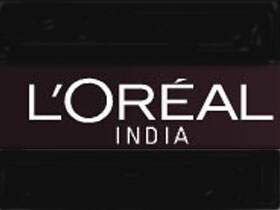
Indo-vation: Tapping the Indian Market
For its consumer products brands, adapting to local culture and preferences has been critical for L’Oreal Paris
In business, as in life, it’s important to be in the right place at the right time – and that’s clearly been the aim of French cosmetics giant L’Oreal in India.
For nearly two decades, the owner of brands like Maybelline, L’Oreal Paris, Lancome and Garnier tried and tested a variety of innovation and marketing strategies that appear to have paid off. Today, L’Oreal reportedly has 41.5 per cent share of the market in India for hair conditioner, around 20 per cent for hair colouring products, and 6.5 per cent and 4.6 per cent for the skincare and shampoo markets respectively. Meanwhile, it is the country’s leading player in the salon products sector.
Innovating for a local market, both with product and pricing, as well as an aggressive marketing strategy, have proved particularly effective, says Dinesh Dayal (MBA ‘84J), L’Oreal India’s chief operating officer. “It’s really a mixture of intuition, hard market research and the power of our global R&D which yielded the right kind of innovation.”
Going local
For its consumer products brands Garnier and L’Oreal Paris, adapting to local culture and preferences has been critical. “Increasingly our blockbusters have been India innovation-led products,” Dayal told INSEAD Knowledge in an interview. For instance, Garnier redesigned its Excellence hair-colouring product that involved more manual work to mix the dye. But at a quarter of the international retailing price, it meant new consumers were more willing to buy the product. Other successes include an oil-based shampoo, Garnier Fructis Shampoo + Oil, to match the frequent use of hair oil, as well as products for previously-dormant segments such as anti-wrinkle creams and men’s skincare. Apart from ‘Indo-vation’, as Dayal calls it, creating brand awareness using movie idols in television commercials proved crucial to gaining a strong foothold. “Television [in India] is here to stay,” observes Dayal. “It’s flourishing, and advertising on TV with a very good ambassador will continue. New media will add on as niche as the country evolves.”
In 1997 when it launched its professional products division, L’Oreal targeted a largely unstructured hairdressing industry to market and sell its salon brands -- L’Oreal Professional, Kerastase and, more recently, Matrix. The company sought to educate salon owners and stylists, and opened five regional training centres. It launched the International Hairdressing Academy in 2006 in Mumbai that offers basic and advanced styling instruction, and regularly invites international stylists to conduct workshops and seminars.
Growing the customer base
In the emerging markets, product penetration is low, providing generous room for growth.
“There’s a huge growth and a desire to consume,” says Dayal. “Even within segments that have a lot of usage like shampoos, there is a desire to upgrade to performing products.” What’s also interesting, he adds, is that it’s not just within one section of the population.
L’Oreal launched its luxury products division three years ago, with Dayal at the helm of the fledgling operation. Boasting brands like Lancome, Giorgio Armani and Yves Saint Laurent, the group has seen strong growth in the luxury sector of between 25 and 30 per cent, he explains. “There’s no one India,” said Dayal. “It’s a heterogeneous market and each one has its own preferences. On all fronts, the growth is very high.” Consumer goods are also showing healthy growth rates of about 15 percent, he adds.
Segmenting markets
The underlying picture is much more complex, however, according to Paddy Padmanabhan, INSEAD professor of marketing. Luxury products may be selling in India’s cosmopolitan cities like Delhi, Mumbai and Bangalore, but their small customer base also makes them highly competitive markets, whether for cosmetics, fragrances or accessories. The greater opportunities, Padmanabhan elaborates, are in the second-tier cities like Ahmedabad and Aurangabad, for example, which are growing very fast but lack access to luxury products and services. Additionally, there is a very large opportunity in the middle market where consumers want to consume but not at very high price points, a challenge for international players like L’Oreal that face “brutal competition” from successful local brands like Marico and Dabur India and consumer goods giant Hindustan Unilever.
“Innovation is not just about new products,” says Padmanabhan. “It’s all across the spectrum with your processes, your back operations, your business model and organisation. Dayal’s observation on this is right on the money. In fact, this is an imperative in the extremely competitive Indian marketplace.”
L’Oreal set up its wholly-owned Indian subsidiary operation in 1994 with the launch of its Garnier Ultra Doux shampoo products. It was around the time when television viewing in India exploded and Indian women came to the forefront in international beauty pageants -- two events that stirred consumer interest in cosmetics, explains Dayal. But tangible changes were visible only five to seven years ago when women began joining the workforce in droves. Disposable income and exposure to a globalised culture became key turning points.
Dayal acknowledges the challenges that lie ahead with innovating new products, supply chain automation, knowledge of smaller markets, organisational challenges and maintaining the company’s global culture.
“[We] are a $200 million company and the fastest-growing subsidiary in the L’Oreal group,” says Dayal. “We sometimes feel we are at the beginning so that puts us in a very confident mood.”
[This article is republished courtesy of INSEAD Knowledge, the portal to the latest business insights and views of The Business School of the World. Copyright INSEAD 2024]





